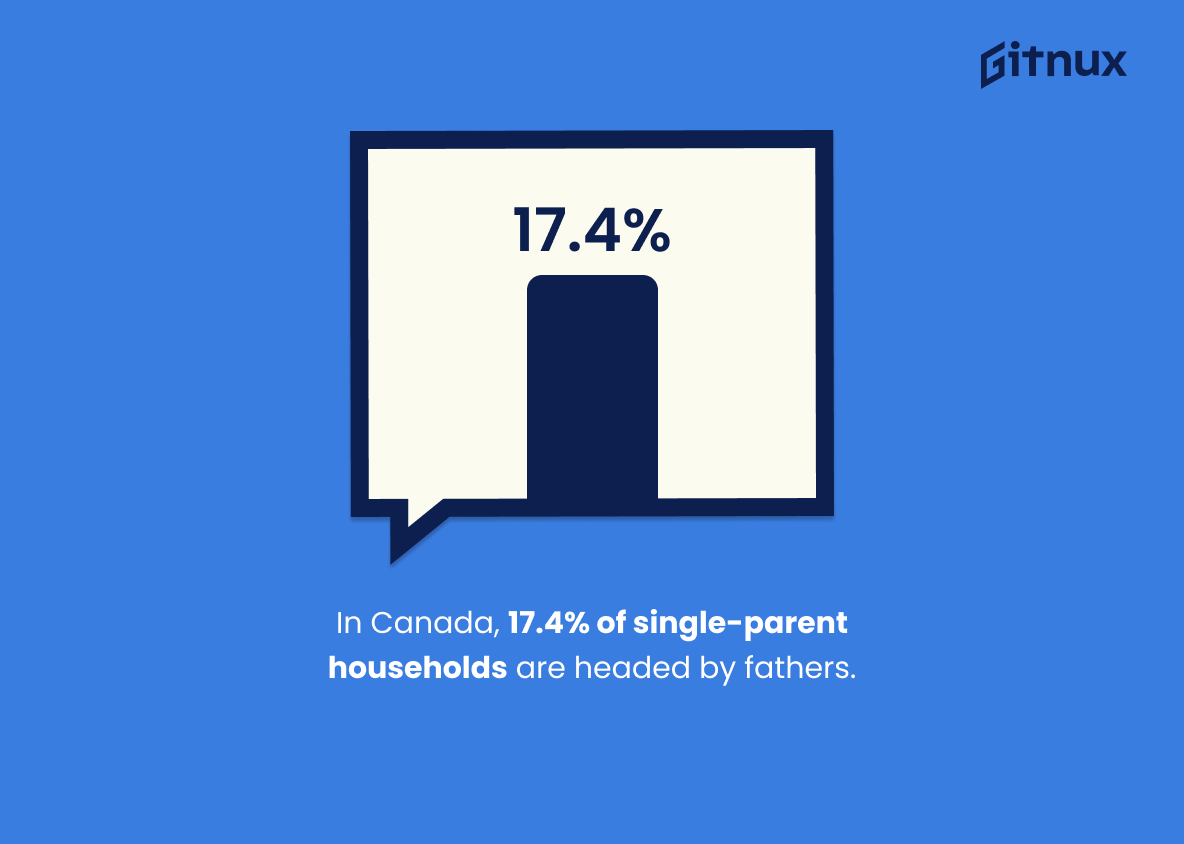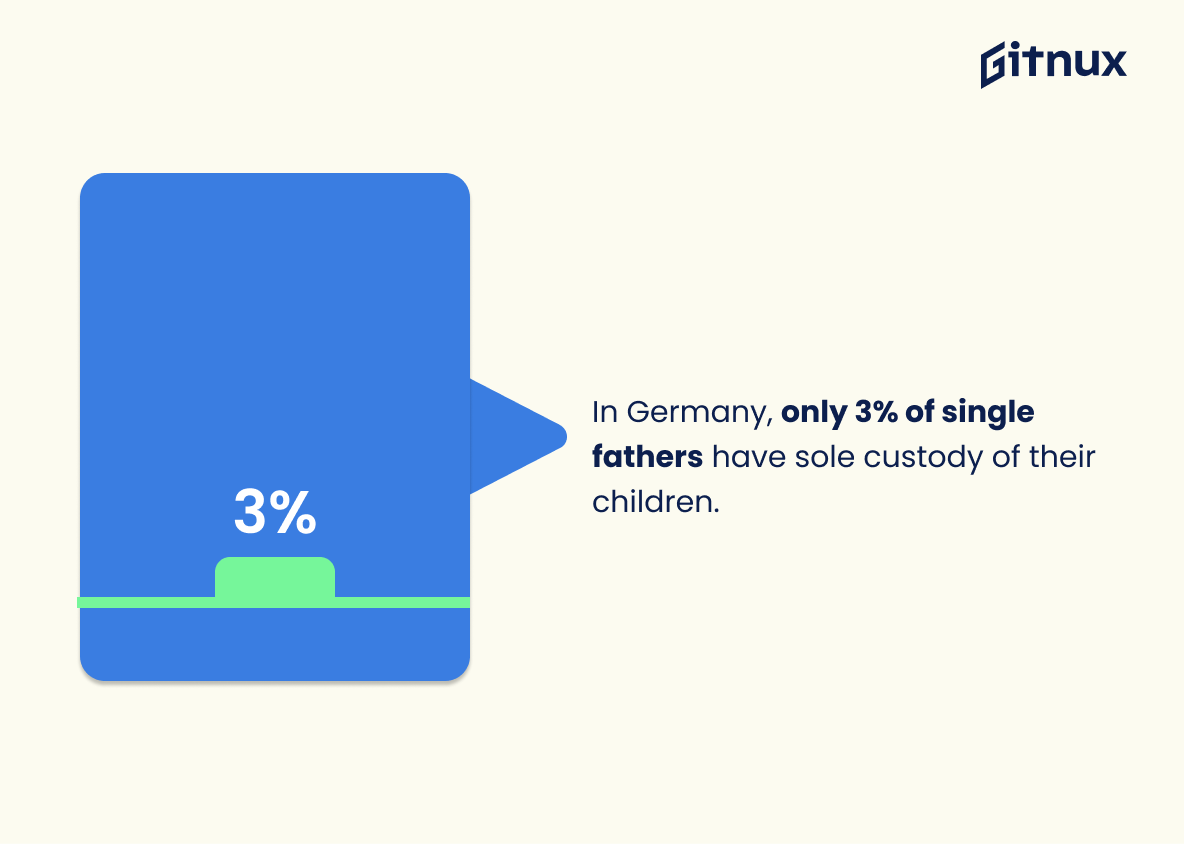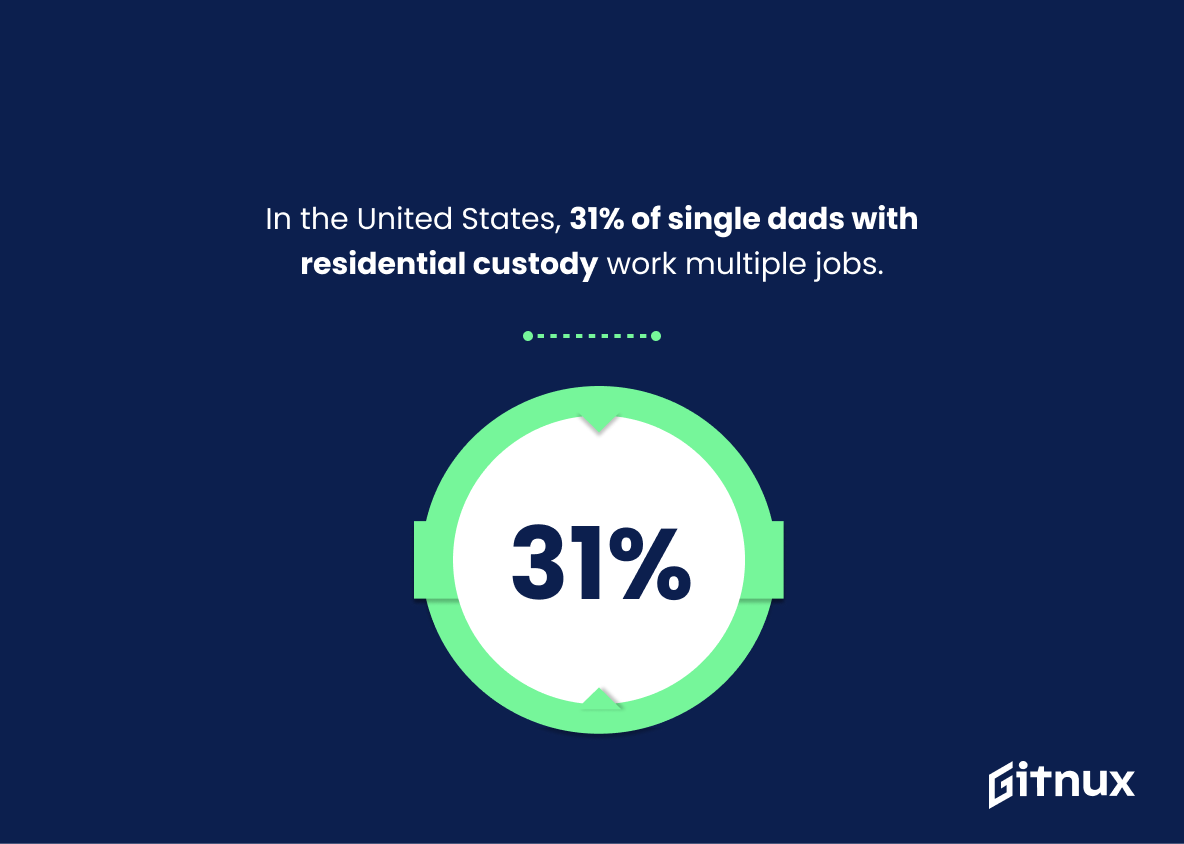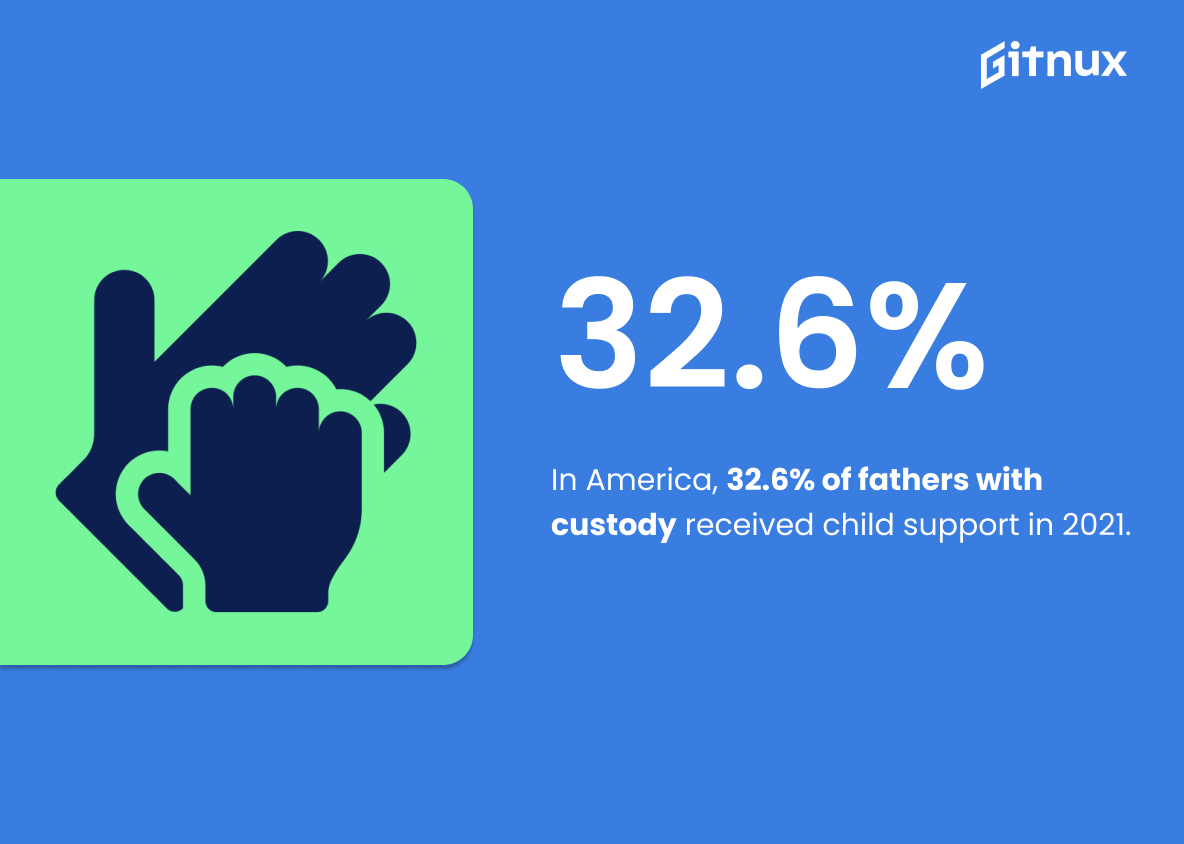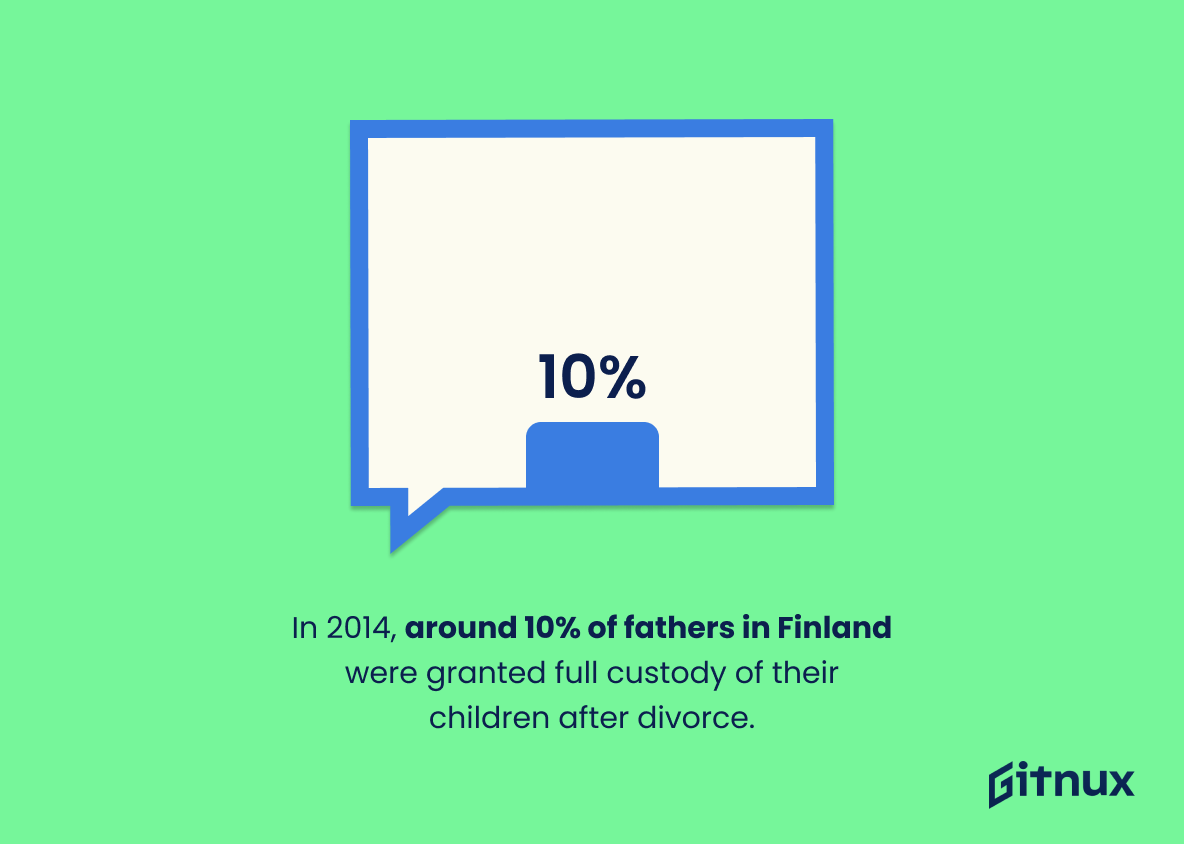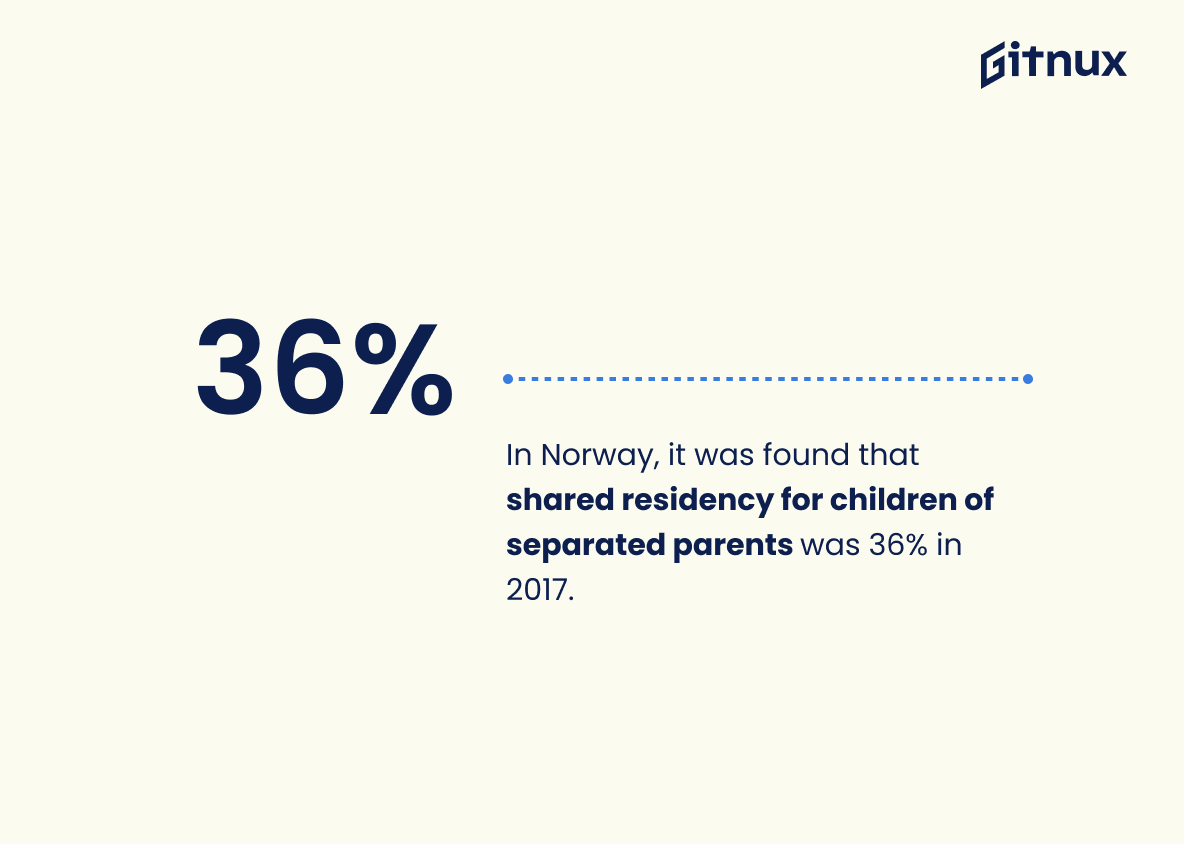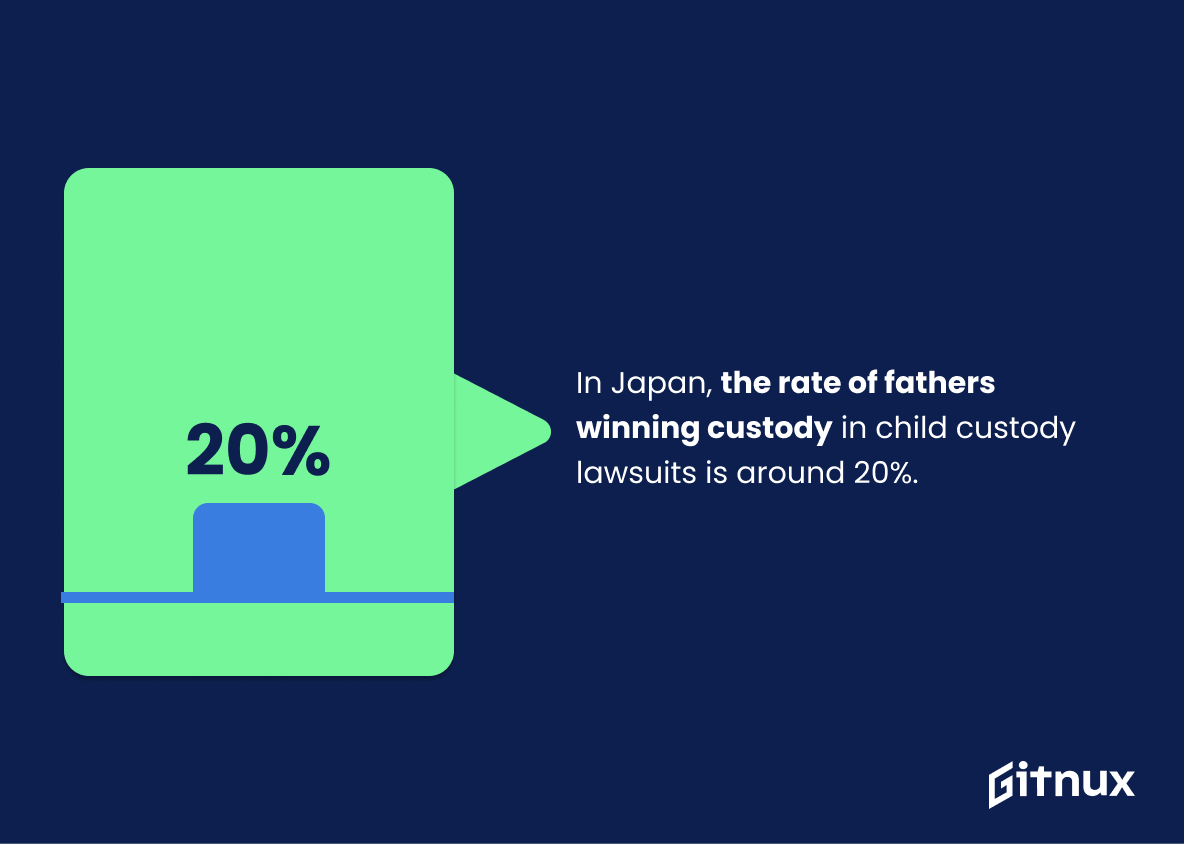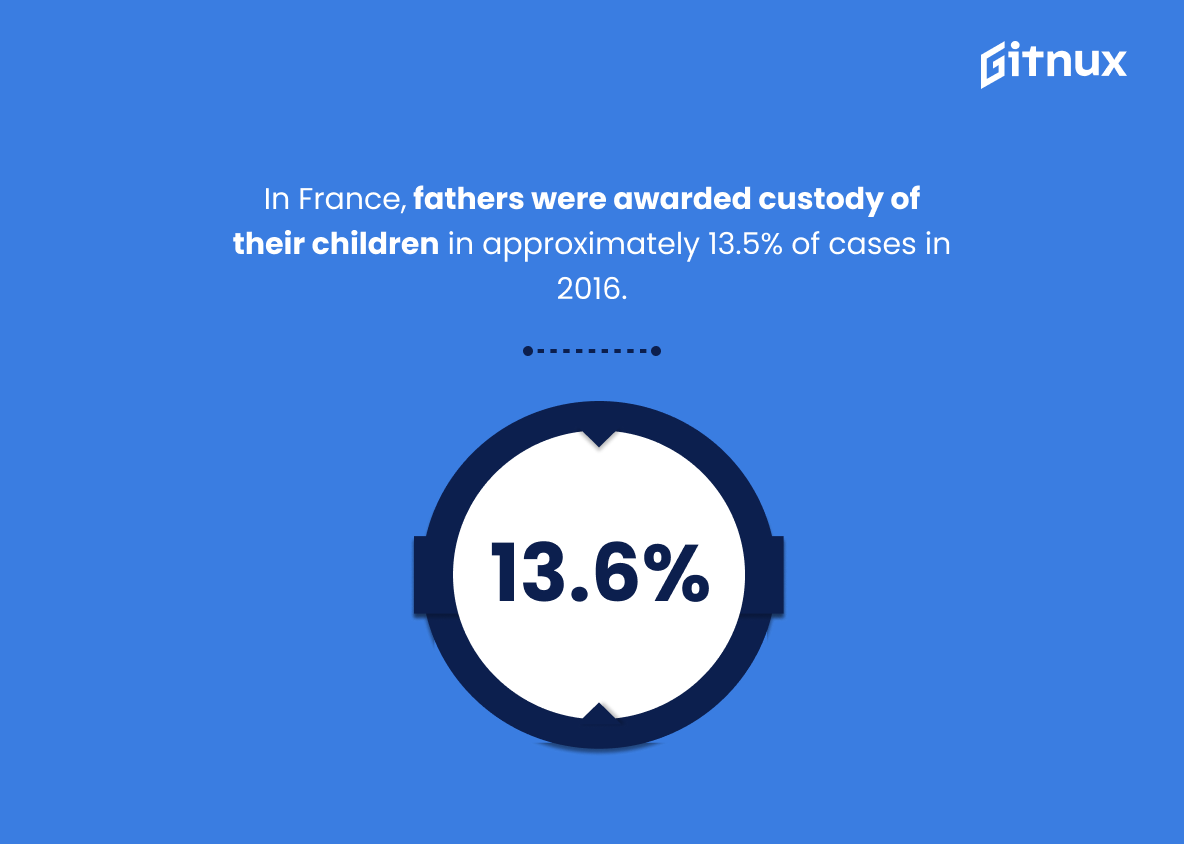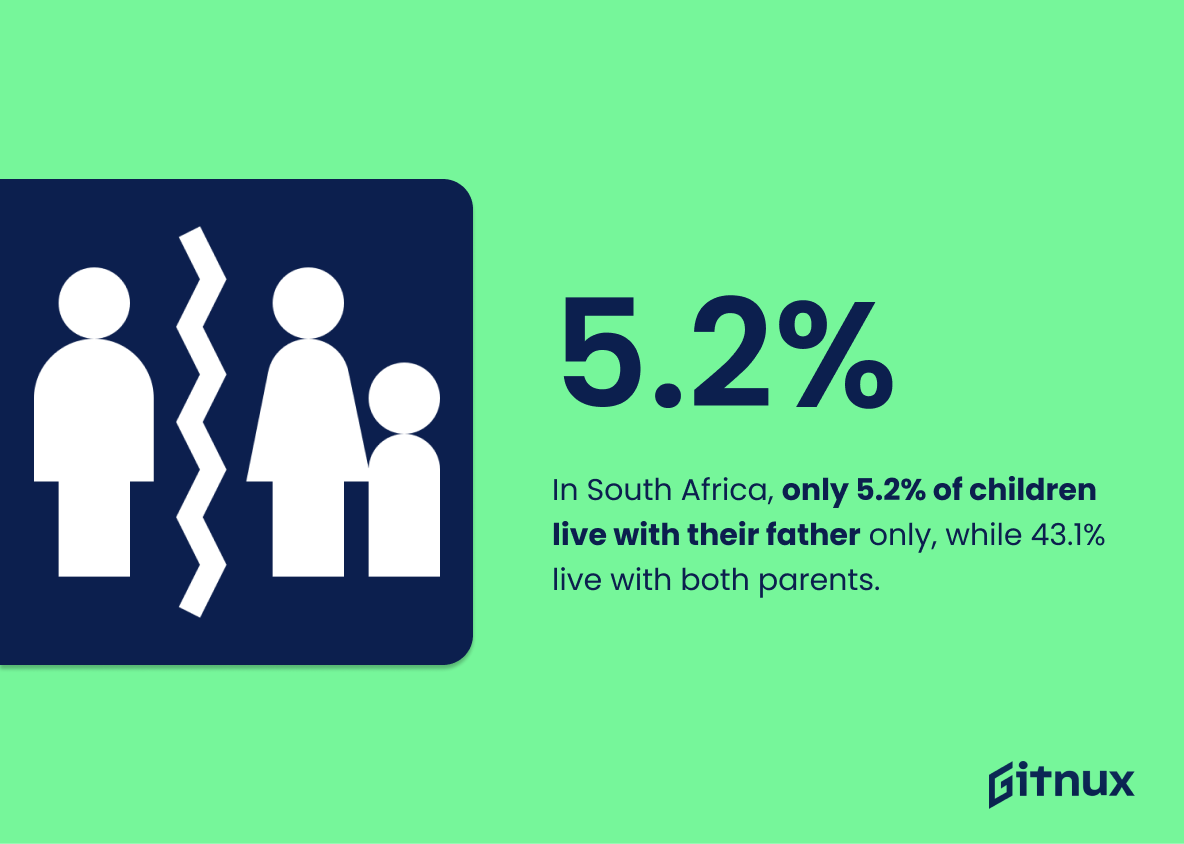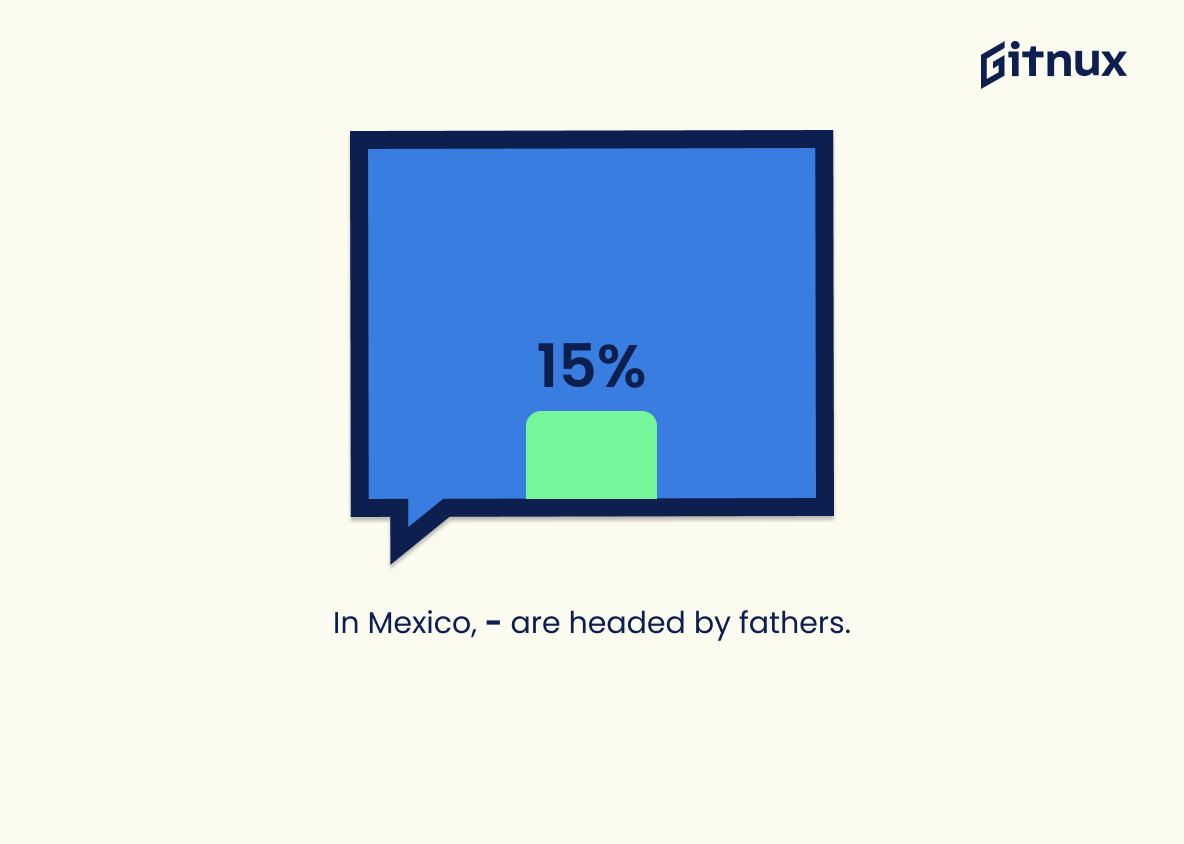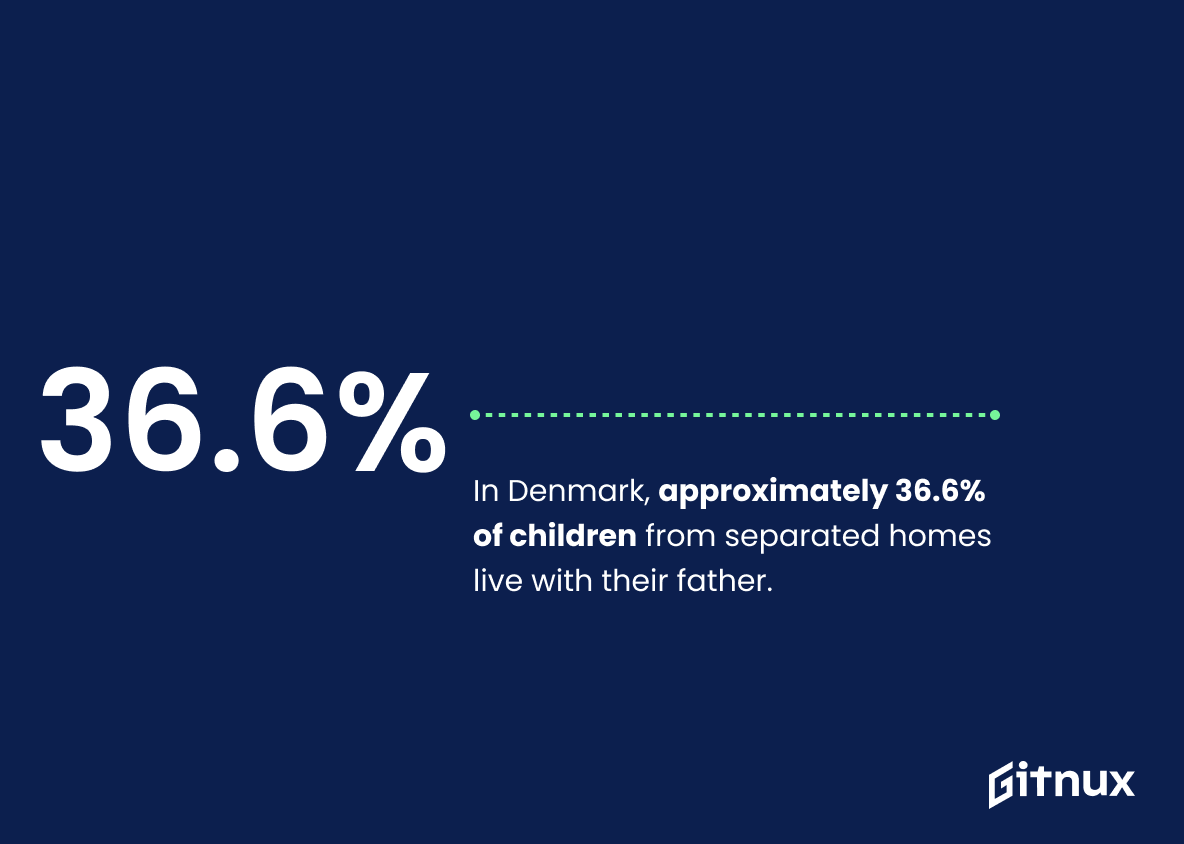Father custody is an important issue that affects many families around the world. This blog post will explore father custody statistics from various countries, including the United States, United Kingdom, Australia, Canada, Sweden, Germany, New Zealand Finland Spain Israel Norway Japan France South Africa Mexico and Poland.
The first statistic we’ll look at is from the US Census Bureau which states that 17.8% of custodial parents in the US are fathers. We’ll also examine a study by Huffpost which found that fathers receive primary residence in about 50% of contested cases when they seek it in America. In addition to this data point for American households with separated parents there’s information available on other nations as well; such as 14% of child arrangement orders granted to fathers in 2019 according to UK government figures or 18% of children living with their father after separation reported by Australian Institute Family Studies research paper among others like 32.6 % single dads receiving child support payments (US) , 25 % shared care arrangements involving dad (New Zealand), 10 % full custody awarded to divorced dads(Finland), 28 .3 % shared residency agreements (Spain) etc.. All these facts demonstrate how much variation exists between different countries regarding legal rights and responsibilities associated with parenting after divorce or separation – something worth considering if you’re facing similar circumstances yourself.
This statistic is a powerful reminder that fathers are increasingly taking on the role of custodial parent in the United States. It highlights the fact that fathers are no longer just the breadwinners, but are actively involved in the day-to-day care of their children. This statistic is a testament to the changing dynamics of family life and the importance of fathers in the lives of their children.
Fathers receive custody in about 50% of contested cases when they seek primary residence in the United States.
This statistic is a powerful reminder of the importance of fathers in the lives of their children. It highlights the fact that fathers are just as capable of providing a safe and nurturing environment for their children as mothers, and that they should be given equal consideration when it comes to custody decisions. This statistic is a testament to the progress that has been made in recognizing the importance of fathers in the lives of their children, and it serves as an important reminder that fathers should not be overlooked when it comes to custody decisions.
Father Custody Statistics Overview
In Australia, 18% of children with separated parents live with their father.
This statistic is a telling indication of the prevalence of fathers having custody of their children in Australia. It highlights the importance of fathers in the lives of their children, even when the parents are no longer together. It also speaks to the importance of fathers being involved in the lives of their children, regardless of the family structure.
In Canada, 17.4% of single-parent households are headed by fathers.
This statistic is a powerful reminder that fathers are increasingly taking on the role of primary caregiver in single-parent households. It speaks to the changing dynamics of family life in Canada, and the growing recognition of the importance of fathers in the lives of their children.
In Sweden, approximately 20% of separated parents share custody equally (50/50) over their children.
This statistic is a powerful reminder of the progress that has been made in Sweden in terms of fathers having equal custody rights over their children. It shows that fathers are increasingly being seen as equal partners in parenting, and that the traditional gender roles of parenting are being challenged. This statistic is an important indicator of the changing attitudes towards fatherhood and the importance of fathers in the lives of their children.
In Germany, only 3% of single fathers have sole custody of their children.
This statistic is a stark reminder of the gender bias that still exists in the German legal system when it comes to child custody. It highlights the fact that fathers are often not given the same rights as mothers when it comes to raising their children, and that the system is still heavily weighted in favor of mothers. This statistic is a call to action for fathers to fight for their rights and for the legal system to recognize the importance of both parents in a child’s life.
In the United States, 31% of single dads with residential custody work multiple jobs.
This statistic is a powerful reminder of the financial burden that single dads with residential custody face. It highlights the fact that many of these fathers are working multiple jobs in order to provide for their families, often at the expense of their own well-being. This statistic is a testament to the dedication and hard work of single dads with residential custody, and it serves as an important reminder of the need for support and resources for these fathers.
In America, 32.6% of fathers with custody received child support in 2021.
This statistic is a telling indication of the importance of child support in the lives of fathers with custody. It highlights the fact that, despite the challenges of single parenthood, many fathers are able to provide for their children with the help of child support payments. This statistic is a reminder that fathers with custody are not alone in their struggles, and that there are resources available to help them provide for their children.
In 2014, around 10% of fathers in Finland were granted full custody of their children after divorce.
This statistic is a powerful indicator of the progress Finland has made in recognizing the importance of fathers in their children’s lives. It shows that fathers are being given the opportunity to take on a more active role in their children’s upbringing, even after divorce. This statistic is a testament to the strides Finland has taken to ensure that fathers are given the same rights and responsibilities as mothers when it comes to raising their children.
In Norway, it was found that shared residency for children of separated parents was 36% in 2017.
This statistic is a telling indication of the prevalence of shared residency for children of separated parents in Norway. It provides a valuable insight into the current state of father custody in the country, and can be used to compare the situation in Norway to other countries. Furthermore, it can be used to measure the effectiveness of any initiatives taken to promote shared residency for children of separated parents.
In Japan, the rate of fathers winning custody in child custody lawsuits is around 20%.
This statistic is a powerful indicator of the progress being made in Japan towards recognizing the importance of fathers in the lives of their children. It shows that fathers are increasingly being given the opportunity to be a part of their children’s lives, even in the face of legal proceedings. This statistic is a testament to the growing recognition of the importance of fathers in the lives of their children, and serves as an example of the progress being made in Japan towards gender equality.
In France, fathers were awarded custody of their children in approximately 13.5% of cases in 2016.
This statistic is a powerful indicator of the progress being made in France towards granting fathers equal custody rights. It shows that fathers are increasingly being recognized as capable and responsible caregivers, and that the legal system is taking steps to ensure that fathers are given the same opportunities as mothers to be involved in their children’s lives. This statistic is an important part of the larger conversation about father custody rights, and it provides a valuable insight into the current state of affairs in France.
In South Africa, only 5.2% of children live with their father only, while 43.1% live with both parents.
This statistic is a powerful reminder of the importance of fathers in the lives of South African children. It highlights the fact that a large majority of children are fortunate enough to have both parents in their lives, while a small minority are not as lucky. This statistic is a stark reminder of the need for fathers to be involved in their children’s lives, and the importance of fathers in providing a stable and loving home environment.
In Mexico, only 15% of single-parent families are headed by fathers.
This statistic is a telling indication of the gender roles that are still prevalent in Mexico. It highlights the fact that fathers are still not given the same opportunities as mothers when it comes to custody of their children. This statistic is a reminder that there is still a long way to go in terms of gender equality in Mexico, and that fathers need to be given more support and recognition in order to be able to take on the responsibility of raising their children.
In Denmark, approximately 36.6% of children from separated homes live with their father.
This statistic is a powerful reminder of the importance of fathers in the lives of children from separated homes. It highlights the fact that fathers are still playing an active role in the upbringing of their children, even when the parents are no longer together. This statistic is a testament to the strength of the bond between fathers and their children, and it serves as a reminder that fathers should be given the opportunity to be involved in their children’s lives.
Conclusion
The statistics presented in this blog post demonstrate that fathers are increasingly being granted custody of their children, both in the United States and around the world. In many countries, such as Sweden, Germany, Canada and New Zealand, more than half of separated parents share custody equally (50/50). Additionally, a significant number of single-parent households are headed by fathers across all nations studied. However there is still room for improvement; while some countries have seen an increase in shared custodial arrangements over recent years – such as Spain with 28.3% – other nations remain far behind with only 5-15% of single parent families headed by fathers. It is clear from these figures that much work needs to be done to ensure equal rights for divorced or separated dads when it comes to child custody decisions worldwide.
References
0. – https://www.ncbi.nlm.nih.gov
1. – https://www.thebalance.com
2. – https://www.ssb.no
3. – https://www.inegi.org.mx
4. – https://www.destatis.de
5. – https://www.singlemotherguide.com
6. – https://www.thediplomat.com
7. – https://www.statssa.gov.za
8. – https://www.aifs.gov.au
9. – https://www.docdroid.net
10. – https://www.50.statcan.gc.ca
11. – https://www.dst.dk
12. – https://www.link.springer.com
13. – https://www.census.gov
14. – https://www.huffpost.com

